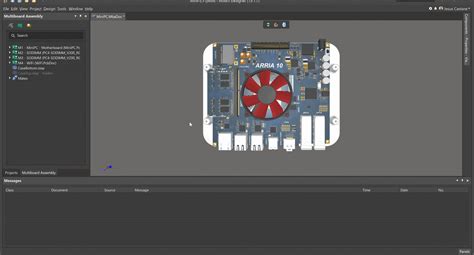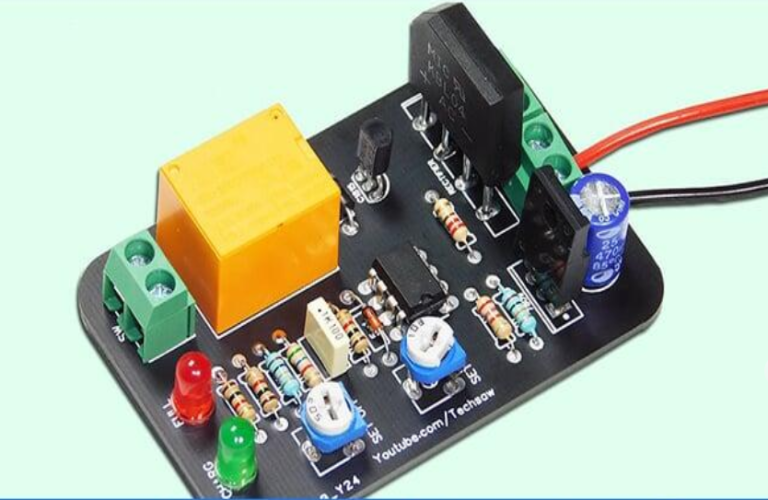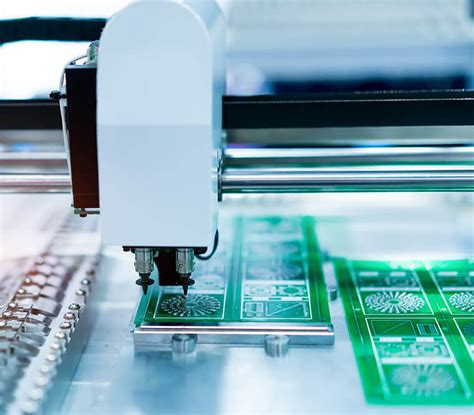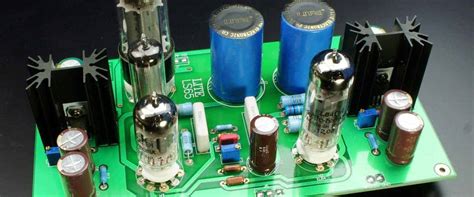Mastering Altium Multiboard Assembly for Streamlined PCB Design
Key Takeaways
Mastering Altium Multiboard Assembly significantly enhances the PCB assembly process by allowing designers to efficiently manage complexities associated with multiple boards in a single project. A foundational aspect of this mastery lies in understanding how to effectively use Altium’s robust tools for organizing and visualizing interconnections between different boards, which is essential for successful PCBA outcomes. Furthermore, adopting best practices for organizing your PCB projects not only streamlines the workflow but also fosters improved collaboration among design teams. This collaborative approach helps address potential misalignments early in the design phase, thus mitigating common challenges encountered during multiboard design. As you adopt advanced techniques in your work, such as optimizing component placement across boards and utilizing simulation tools provided by Altium, the efficiency of your multiboard assembly will vastly improve. Ultimately, embracing these strategies can lead to more successful project outcomes and innovations within the landscape of PCB design, making it imperative for teams to invest time in mastering these concepts.
Understanding the Basics of Altium Multiboard Assembly
Altium Multiboard Assembly refers to a comprehensive approach in printed circuit board (PCB) design that allows for multiple boards to be assembled together as a cohesive unit. This process is vital for projects where various PCBs must operate in unison, enhancing functionality and improving design efficiency. Understanding the intricacies of pcb assembly within the Multiboard environment is crucial for ensuring successful integration and performance of the final product. The assembly process involves not just the individual design of each board, but also how these boards interact, communicate, and function together as part of a larger system. By leveraging the capabilities offered by Altium, designers can streamline their workflows and enhance collaboration among team members, leading to more efficient project outcomes. Adopting effective techniques in pcba can mitigate common challenges seen in complex projects, optimizing the overall assembly process. As technology evolves, mastering these foundational principles of Altium Multiboard Assembly becomes indispensable for delivering high-quality electronic solutions that meet contemporary demands.
Key Features and Benefits of Multiboard Design in Altium
Altium’s Multiboard Assembly capability plays a crucial role in modern PCB assembly processes, especially for projects involving multiple circuit boards working together. One of the standout features is the ability to utilize design reuse, which improves efficiency by allowing designers to use existing components across various boards, ultimately reducing development time. This reuse functionality not only streamlines the design process but also enhances consistency in performance and reliability among connected assemblies.
Another significant benefit of employing multiboard design in Altium is its robust collaboration tools. With integrated communication features, design teams can work simultaneously on different components of a project, facilitating better interaction and reducing the risk of errors. When teams can view interconnected boards within a shared environment, they achieve improved visibility, leading to enhanced problem-solving capabilities.
Moreover, Altium supports rigorous layer management through intelligent signal routing between boards. This feature is essential when devising complex PCBA systems that require precise control over signal integrity and timing issues. Enhanced simulation tools also allow engineers to model the electrical performance across multiple boards before production begins.
| Feature | Benefit |
|---|---|
| Design Reuse | Reduces development time and costs |
| Collaboration Tools | Enhances teamwork and reduces errors |
| Signal Integrity Management | Ensures reliable performance across assemblies |
“Effective collaboration tools are essential for minimizing errors in complex designs.”
In summary, leveraging the technical prowess of Altium for multiboard assembly not only optimizes workflow but also empowers teams to innovate while maintaining high standards of quality and efficiency in their PCB design endeavors.
Best Practices for Organizing Your PCB Projects
When embarking on a new PCB project, effective organization is paramount to achieving a successful PCB assembly outcome. First and foremost, it is essential to create a clear hierarchy for your design files and folders. Employing a consistent naming convention allows all team members to navigate the project effortlessly, ensuring that critical components such as schematic files, PCBA layouts, and documentation are easily accessible. Utilizing version control can also streamline the process; keeping track of changes assists in identifying specific revisions and their corresponding features.
Moreover, separating files by project phase—such as initial designs, revisions, and final layouts—enhances clarity and reduces confusion during the multiboard assembly process. Integrating collaboration tools can facilitate real-time communication between design teams, enabling swift feedback and more cohesive results. Lastly, consider maintaining an organized checklist of manufacturing requirements for each board within the multiboard setup. This checklist serves as a guideline for ensuring that all components are accounted for before proceeding to production. By following these best practices, teams can significantly enhance organization within their PCB projects, leading to improved efficiency in both design and pcb assembly endeavors.
Streamlining Collaboration Among Design Teams
Effective collaboration is crucial in the realm of PCB assembly and PCBA to ensure that multiboard systems are designed and developed efficiently. As design teams often encompass various stakeholders, including engineers, project managers, and producers, establishing a seamless workflow is essential. Utilizing tools within Altium Multiboard Assembly enables teams to share design data and real-time feedback, fostering a culture of open communication. This collaborative approach reduces the chances of misalignment or duplication of efforts, which can lead to costly delays and errors in the assembly process. By leveraging features such as version control and centralized project management within Altium, teams can maintain clarity on project statuses. Additionally, integrating PCBA methodologies enables team members to instantly visualize changes across multiple boards, enhancing overall understanding of the assembly requirements. An emphasis on a structured feedback loop allows for immediate adjustments based on team input, resulting in innovative solutions that streamline production workflows. Ultimately, fostering collaboration will not only enhance the efficiency of multiboard projects but also lead to higher quality outcomes in the design process.
Advanced Techniques for Efficient Multiboard Assembly
In the realm of PCB assembly, particularly when dealing with complex systems that require multiboard design, the implementation of advanced techniques is vital for boosting efficiency. One such technique involves the use of hierarchical designs, which allows designers to compartmentalize their projects into manageable sections. By segmenting large pcba projects, teams can focus on individual boards while ensuring that integration and functionality remain intact. Additionally, adopting version control systems can enhance collaboration among design teams by tracking changes and facilitating cohesive updates among various components.
Moreover, employing simulation tools available within Altium can lead to early identification of potential issues that may arise during the assembly process. This proactive approach not only minimizes errors but also reduces time spent on revisions. A noteworthy technique is to create comprehensive documentation for each phase of the multiboard assembly, ensuring that all team members are aligned with project specifications and requirements. This meticulous documentation can streamline communication channels and foster a collaborative environment, essential for overcoming challenges intrinsic to multiboard design.
In essence, integrating these advanced methods within your multiboard assembly process can markedly improve workflow efficiency and lead to successful project outcomes. By focusing on hierarchical design approaches, efficient collaboration strategies, and leveraging simulation tools, teams can navigate the complexities of PCB assembly with greater confidence and success.
Common Challenges in Multiboard Design and How to Overcome Them
When embarking on multiboard design, engineers often encounter a variety of challenges that can hinder their progress. One of the primary obstacles is maintaining consistency across multiple boards, which can lead to integration issues later in the assembly process. To combat this, it is important to adopt a unified design approach, ensuring that design rules and methodologies are adhered to throughout the project. Another significant challenge is managing the complexity of interconnections between boards. Utilizing Altium’s sophisticated tools for pcb assembly allows designers to visualize these connections effectively, leading to fewer errors during implementation.
In addition, collaborating with cross-functional teams can be difficult in multiboard projects due to potential differences in design priorities. Establishing clear communication channels and utilizing collaborative features within Altium can foster a more seamless workflow and improve overall team dynamics. The use of simulation tools also plays a crucial role; they enable teams to identify potential performance issues before physical prototypes are created, saving both time and resources.
Moreover, ensuring that all members involved in the project are well-informed about the latest best practices for pcba can significantly diminish errors originating from outdated information or techniques. By addressing these challenges with strategic planning and robust communication methods, teams can streamline their processes and enhance the success rate of their multiboard projects. Ultimately, overcoming these hurdles paves the way for smoother transitions from design to production, leading to more efficient pcb assembly outcomes overall.
Real-world Examples: Successful Implementations of Altium Multiboard Assembly
Implementing Altium Multiboard Assembly in various projects has led to remarkable enhancements in PCB assembly processes, showcasing its potential to tackle complex design challenges efficiently. For instance, a well-known electronics company leveraged Altium‘s multiboard capabilities to develop a sophisticated medical device that required collaboration among multiple design teams. By streamlining the workflow for their pcba needs, they were able to integrate multiple boards seamlessly, reducing the overall assembly time by over 30%. This significant improvement was attributed to features enabling better communication and collaboration across teams, ultimately leading to a more cohesive and well-aligned project.
In another example, a consumer electronics manufacturer faced difficulties while coordinating the assembly of various interconnected boards for a new gaming console. By adopting Altium Multiboard Assembly, they were able to visualize dependencies among different PCB designs clearly and manage changes efficiently. As a result, the design phase saw remarkable reductions in errors typically associated with manual syncing across multiple files. The integration of these processes not only facilitated smoother transitions from design to assembly, but it also enhanced team productivity, enabling them to launch their product ahead of schedule.
These examples highlight how companies across different industries can capitalize on the advantages of multiboard design in Altium, ultimately leading to more successful outcomes in their PCB assembly projects. The strategic implementation of these tools not only streamlines processes but also fosters innovation through enhanced collaboration and efficiency, paving the way for future advancements in electronic design.
Future Trends in PCB Design: The Evolution of Multiboard Systems
As technology continues to advance, the landscape of PCB assembly is rapidly evolving, embracing new methodologies and practices that enhance productivity and efficiency. One particularly promising trend is the increasing integration of multiboard systems, a design approach that allows for greater complexity and functionality in electronic devices. By leveraging advanced software tools such as Altium’s capabilities, design teams can streamline their workflows significantly. This not only simplifies the pcba process but also fosters improved collaboration among members working on complex projects. Moreover, the emphasis on modular designs is likely to increase, enabling seamless interchangeability and upgrades of components. As industry demands for more sophisticated technologies grow, the implementation of smart features within multiboard assemblies will likely become a standard practice, ensuring that products can maintain competitiveness in an ever-changing market. Furthermore, as sustainability becomes a key focus across various sectors, designers will increasingly look for ways to reduce waste and enhance energy efficiency throughout each phase of pcb assembly. The future promises not just innovation in design but also collaboration and adaptability within teams aiming to meet the challenges presented by emerging technologies.
Conclusion
In summary, mastering Altium Multiboard Assembly allows designers to navigate the complexities of PCB assembly with heightened efficiency. By applying the techniques and best practices discussed, you can optimize your workflows, ensuring that collaboration among team members is not only streamlined but also effective. The integration of pcba practices within the Altium framework enables teams to manage intricate projects effortlessly. As you hone your skills in this area, consider the potential for improved project outcomes and reduced lead times, emphasizing the importance of multiboard design as a pivotal component of modern electronics development. Embracing these strategies can significantly enhance your ability to deliver robust and innovative designs that meet industry standards and client expectations.
FAQs
Q: What is Altium Multiboard Assembly?
A: Altium Multiboard Assembly refers to the process of integrating multiple printed circuit boards (PCBs) effectively within a single design environment, allowing for seamless pcb assembly.
Q: How does Multiboard Design enhance the PCB design process?
A: Multiboard Design promotes organization and efficiency in complex projects by allowing designers to manage multiple boards collaboratively and in a coordinated manner, ultimately streamlining the entire pcba workflow.
Q: What are some best practices for organizing my PCB projects in Altium?
A: Establish clear hierarchies, use coherent naming conventions, and take advantage of Altium’s project management tools. This will help ensure that all team members can easily access and understand the designs involved in your pcb assembly projects.
Q: How can I improve team collaboration when working on designs with multiple boards?
A: Leverage version control systems and communication platforms integrated within Altium to facilitate real-time updates and discussions. This encourages collaboration among teams working on various aspects of the PCB design.
Q: What challenges might I face with Multiboard Design, and how can I address them?
A: Common challenges include dealing with inter-board connections and managing component placement efficiently. Using simulation tools within Altium can help identify potential issues early on, improving your overall design integrity.







